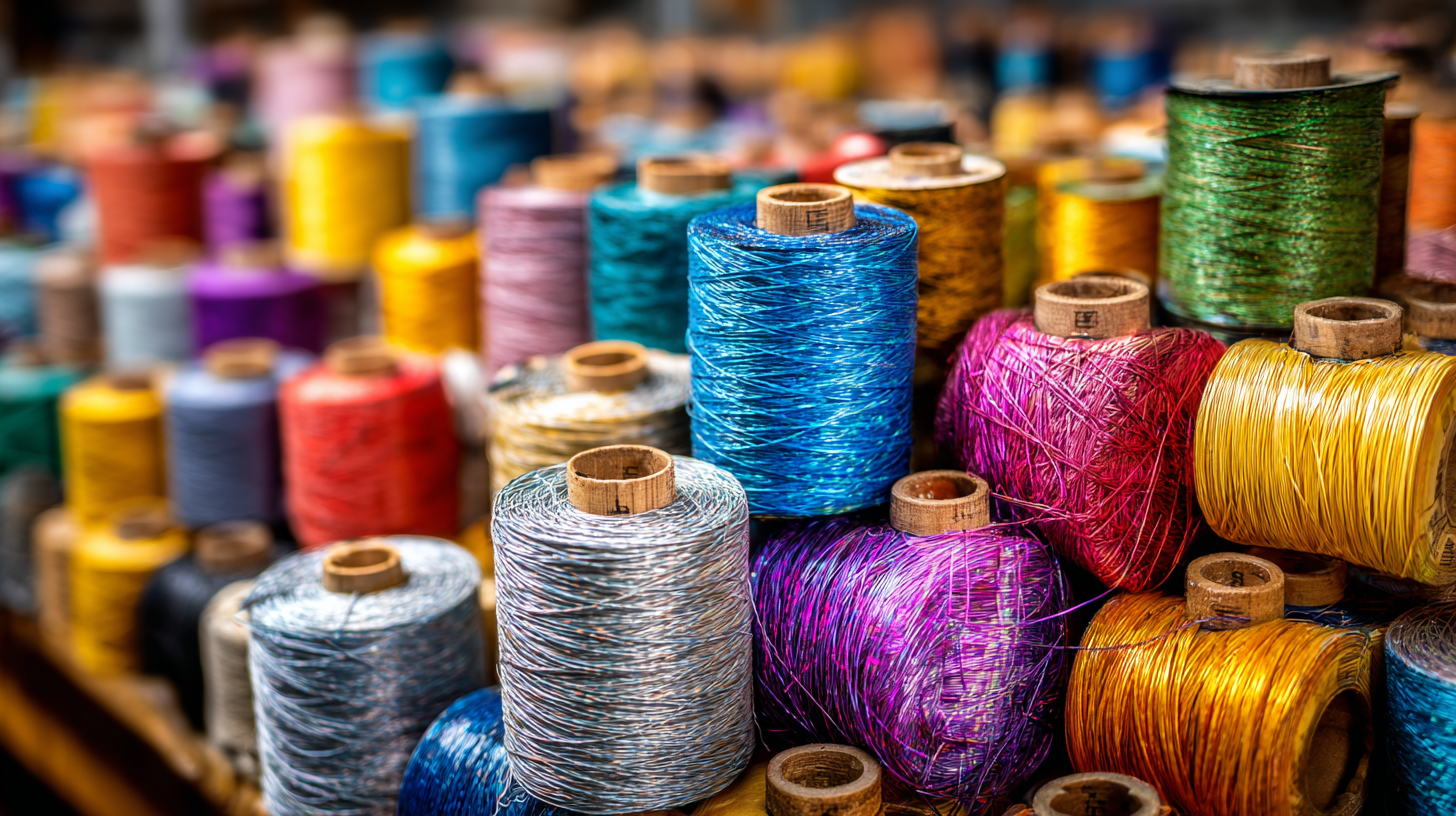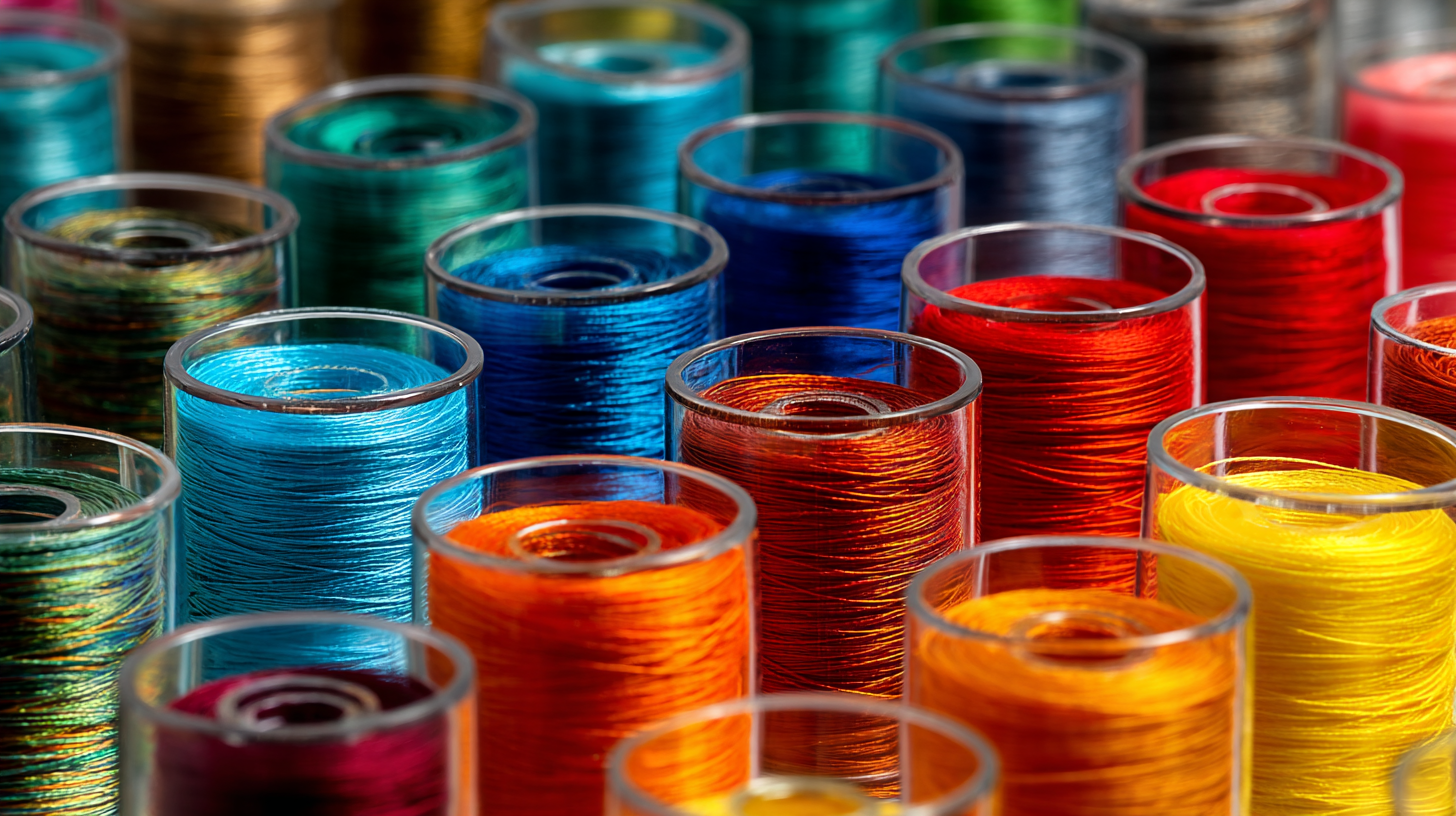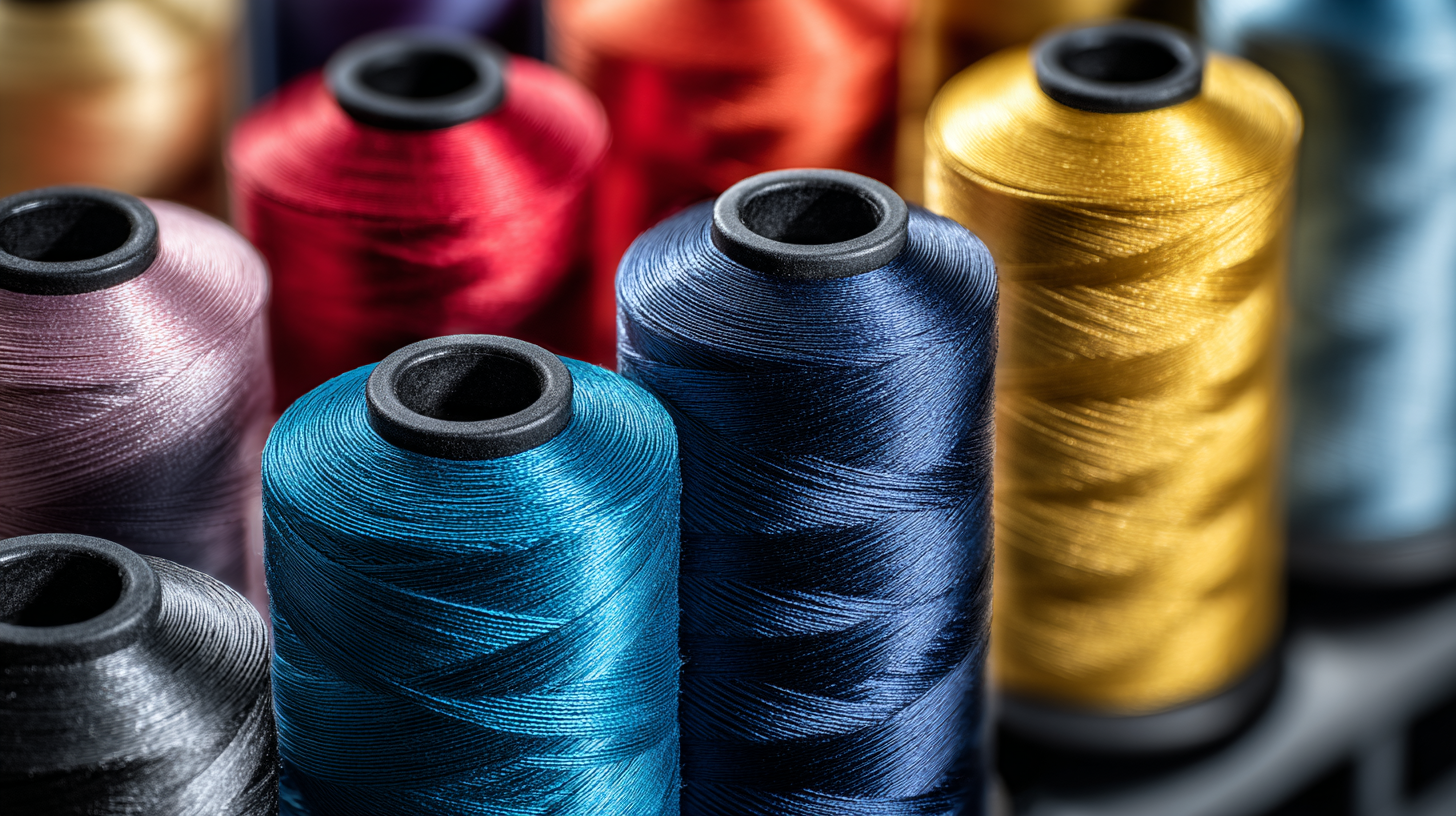
-
Home
-
Products
-
PVC Cable Material
-
Low Smoke Zero Halogen Cable Material
-
Cable material
-
Optical fiber cable
-
-
About Us
-
VR
-
News
-
Blog
-
Contact Us
Leave Your Message

In the rapidly evolving landscape of optical communication, the demand for high-quality materials has never been more critical. According to the latest market reports, the global optical fiber market is expected to reach approximately $5 billion by 2025, driven by the increasing deployment of fiber networks and the rising need for high-speed internet connections.

A key component in this burgeoning industry is Glass Yarn for Optical Cables, which is prized for its favorable properties, including lightweight, strength, and excellent insulation capabilities. As manufacturers strive to meet the soaring demand for reliable and efficient optical solutions, finding reputable suppliers of Glass Yarn for Optical Cables becomes essential.
This blog aims to provide essential tips and strategies for sourcing superior materials that can ensure optimal performance in optical communication systems, while also discussing the technological trends shaping the future of this sector.
When searching for high-quality glass yarn for optical cables, several key characteristics should be carefully considered. First, purity is paramount; the glass must be free from impurities to ensure optimal transmission properties. Secondly, the diameter and uniformity of the yarn are critical, as inconsistencies can lead to signal loss or increased attenuation. Additionally, the thermal stability and mechanical strength of the glass yarn contribute significantly to the durability and performance of optical cables.
As the optical communication industry continues to grow rapidly, innovations and collaborations, such as the recent projects in advanced fiber optic technology, highlight the importance of using superior materials. This necessitates a thorough assessment of suppliers to ensure they adhere to quality standards that will sustain technological advancements in fiber optics. Therefore, evaluating a supplier’s sourcing practices, production capabilities, and certifications can provide insights into their reliability and the quality of the glass yarn they offer.
When selecting glass yarn for optical cables, understanding the impact of supplier certifications on quality assurance is crucial. Certifications such as ISO 9001, which focuses on quality management systems, can significantly enhance a supplier's credibility. According to a report from the International Organization for Standardization (ISO), businesses that implement ISO 9001 standards experience an average 20% improvement in product quality, which is critical given the stringent performance requirements of optical cable applications.
Moreover, compliance with industry-specific standards such as RoHS (Restriction of Hazardous Substances) and REACH (Registration, Evaluation, Authorisation, and Restriction of Chemicals) not only demonstrates a supplier's commitment to sustainability but also ensures that the materials used are safe and reliable. A study by the Glass Fiber Manufacturers Association (GFMA) showed that suppliers adhering to these regulations reported a 15% reduction in defects, leading to enhanced longevity and reliability of the final optical cables. Thus, prioritizing certified suppliers can significantly influence the performance and safety of optical communication systems.
 When it comes to sourcing glass yarn for optical cables, striking the right balance between cost and quality is essential. The market is flooded with suppliers, each claiming to offer the best product at competitive prices. However, navigating this landscape requires careful consideration to ensure that your investment translates into reliable, high-performance materials. Start by conducting thorough research on potential suppliers, focusing on their reputation, production processes, and quality assurance measures. Don’t hesitate to request samples to evaluate the quality firsthand, as this can save you from costly mistakes down the line.
When it comes to sourcing glass yarn for optical cables, striking the right balance between cost and quality is essential. The market is flooded with suppliers, each claiming to offer the best product at competitive prices. However, navigating this landscape requires careful consideration to ensure that your investment translates into reliable, high-performance materials. Start by conducting thorough research on potential suppliers, focusing on their reputation, production processes, and quality assurance measures. Don’t hesitate to request samples to evaluate the quality firsthand, as this can save you from costly mistakes down the line.
In the rapidly evolving field of optical fiber technology, staying informed about industry trends and innovations is crucial for finding reliable suppliers of glass yarn. According to a recent report by Markets and Markets, the global optical fiber market is expected to reach $19.96 billion by 2026, growing at a CAGR of 10.9%. This growth is driving suppliers to innovate, making it essential to identify those who keep pace with advancements in production processes and material quality.
When searching for suppliers, consider leveraging industry partnerships and networking events to connect with forward-thinking companies. Tip 1: Attend key trade shows where leading manufacturers showcase their latest technologies and products. This not only increases your visibility but also allows you to gather valuable insights into supplier capabilities.
Another important strategy is to evaluate supplier certifications and their adherence to international quality standards. Tip 2: Request samples and conduct quality assessments based on specific fiber specifications such as tensile strength and thermal properties. By prioritizing suppliers who invest in quality assurance and innovative practices, you can ensure that the glass yarn you source will meet the rigorous demands of modern optical networks.
When it comes to sourcing quality glass yarn for optical cables, evaluating supplier performance is crucial for ensuring that you receive the best products available. Establishing clear metrics and key performance indicators (KPIs) helps buyers assess suppliers effectively. Some important metrics include delivery reliability, where the ability to meet shipping timelines can significantly impact production schedules. Additionally, quality control metrics, such as defect rates and compliance with industry standards, are vital in analyzing a supplier’s consistency in providing high-quality materials.
Moreover, communication and responsiveness should also be factored into your evaluation. Metrics like response time to inquiries and the frequency of updates regarding order status can indicate the supplier's commitment to customer service. Financial stability is another KPI that shouldn't be overlooked; a supplier’s ability to invest in technology and innovation could translate into better products and services for your business. By focusing on these performance indicators, businesses can make informed decisions, ultimately leading to successful partnerships with dependable glass yarn suppliers.
